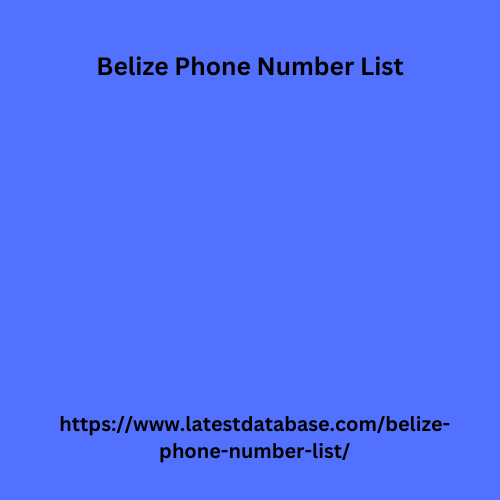Post by account_disabled on Feb 15, 2024 6:10:55 GMT 1
IAM allows you to grant controlled access to your AWS resources to employees, AWS services, and applications running on remote servers. IAM Groups is a useful organizational tool that allows you to define permissions for multiple users at the same time. IAM organizational tools First, a quick breakdown of the various IAM tools: IAM policies group individual permissions to form a unified entity that applies to users, roles, and groups. For example, you can create a policy that allows objects to be placed into a specific set of S3 buckets. IAM users have access keys or passwords that allow them to access AWS services from the CLI, API, or Management Console. This allows employees to access AWS resources from outside of their AWS account. They can add policies to their account that allow them. An IAM role is similar to users, but does not come with any access keys.
These are used to allow other AWS services to use you Belize Phone Number List resources and do not give anyone outside of your account access to the API or CLI. For example, you can give an EC2 instance a role that allows it to access S3, and since it's already running on your AWS account, it can act as a role without requiring access keys. AWS Organizations is a special tool that allows you to divide your root AWS account into four different sub-units with centralized billing and control. While not technically related to IAM, this allows you to completely separate development, testing, staging, and production environments, which can allow you to assign permissions to employees who only work in the dev environment. Give a slow IAM. IAM Groups is what we will discuss today.

This tool allows you to attach multiple policies to a group and add users to that group who are assigned the same policies as the group. It's a great organizational tool and crucial for keeping track of multiple users. How to work with groups Groups allow you to distinguish between different classes of employees with different licenses. For example, say you have a team of software developers and a team of QA engineers. Both have different requirements and therefore need different licenses. Placing them in a group allows you to easily create new employees with access or move users between groups when necessary. Create a new group from the "Groups" tab of the IAM management console . Create a new group from Give it a name and add any policies you want. Groups can attach a maximum of 10 policies, so you'll probably want to have one or two custom policies for that group. You can also add internal policies directly to the group, but we recommend keeping everything organized. Give the group a name and add any policies you want.
These are used to allow other AWS services to use you Belize Phone Number List resources and do not give anyone outside of your account access to the API or CLI. For example, you can give an EC2 instance a role that allows it to access S3, and since it's already running on your AWS account, it can act as a role without requiring access keys. AWS Organizations is a special tool that allows you to divide your root AWS account into four different sub-units with centralized billing and control. While not technically related to IAM, this allows you to completely separate development, testing, staging, and production environments, which can allow you to assign permissions to employees who only work in the dev environment. Give a slow IAM. IAM Groups is what we will discuss today.

This tool allows you to attach multiple policies to a group and add users to that group who are assigned the same policies as the group. It's a great organizational tool and crucial for keeping track of multiple users. How to work with groups Groups allow you to distinguish between different classes of employees with different licenses. For example, say you have a team of software developers and a team of QA engineers. Both have different requirements and therefore need different licenses. Placing them in a group allows you to easily create new employees with access or move users between groups when necessary. Create a new group from the "Groups" tab of the IAM management console . Create a new group from Give it a name and add any policies you want. Groups can attach a maximum of 10 policies, so you'll probably want to have one or two custom policies for that group. You can also add internal policies directly to the group, but we recommend keeping everything organized. Give the group a name and add any policies you want.


